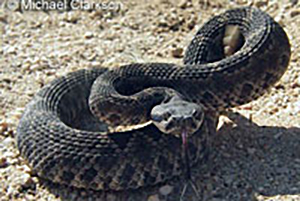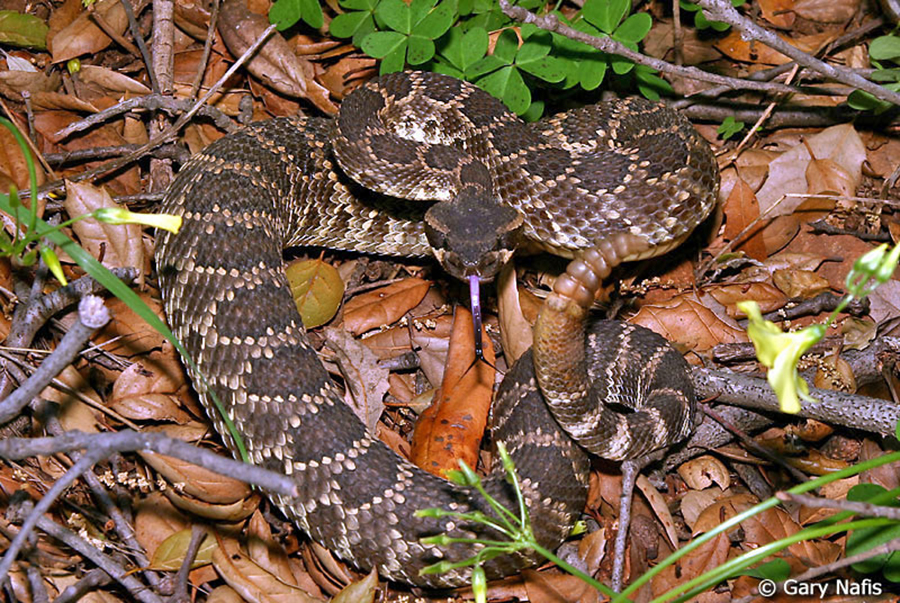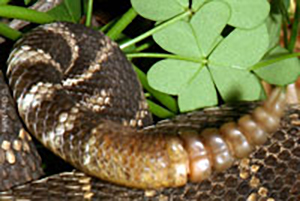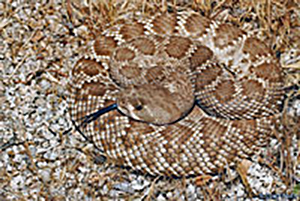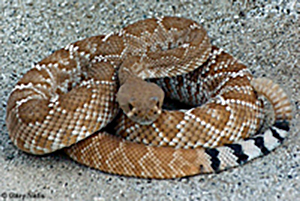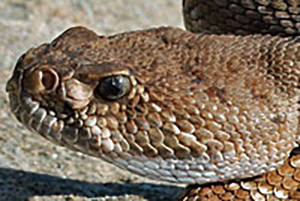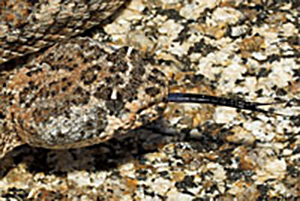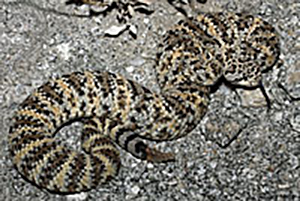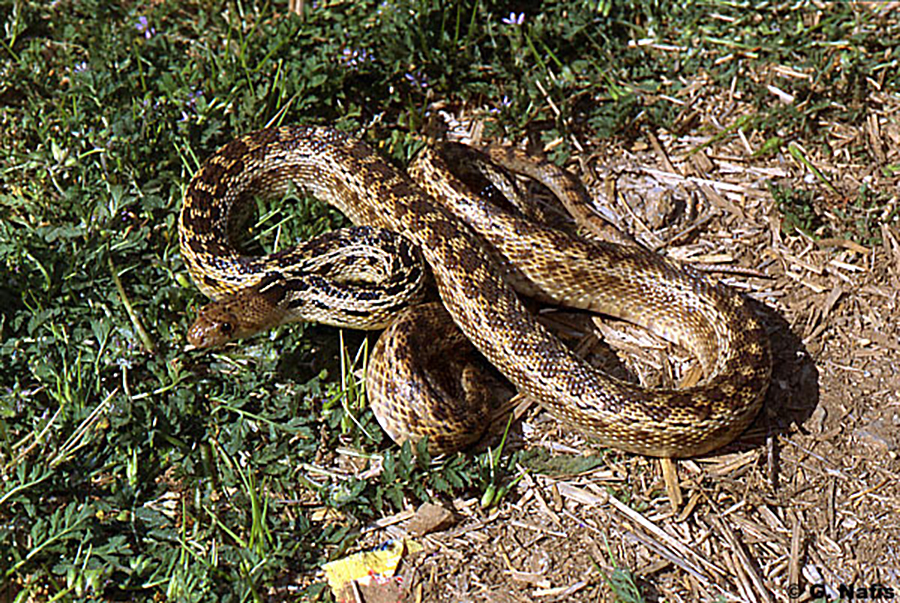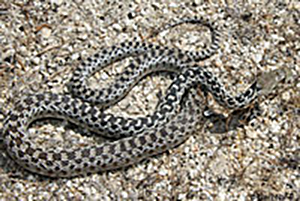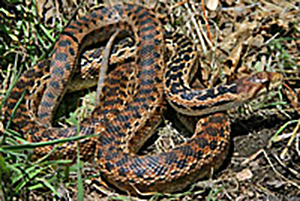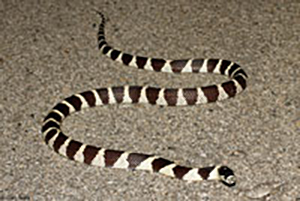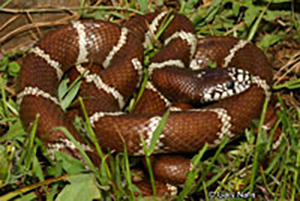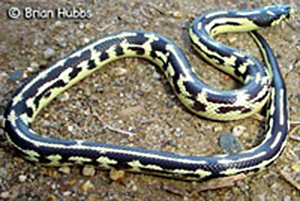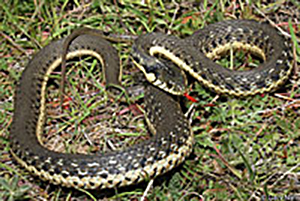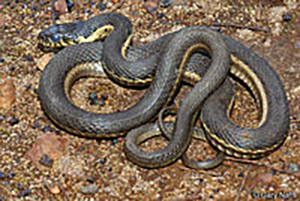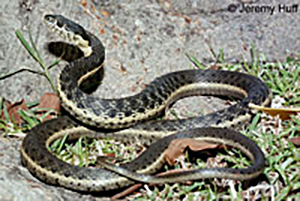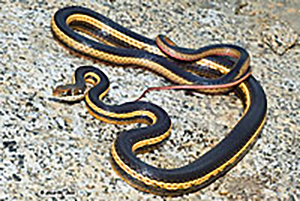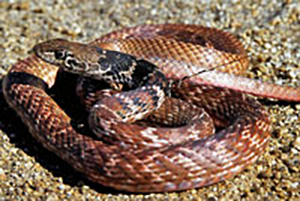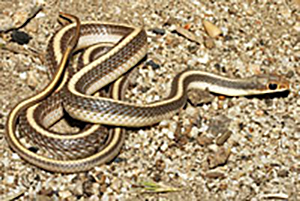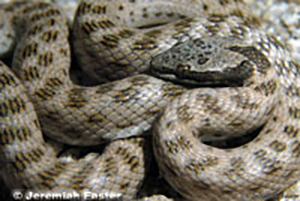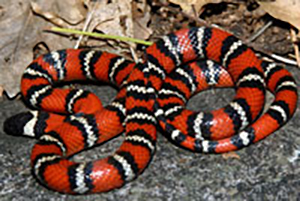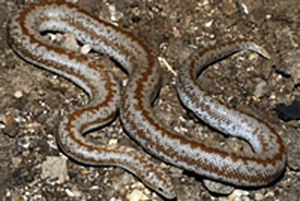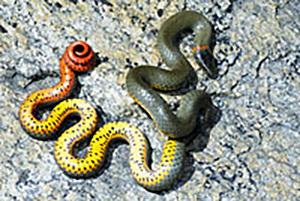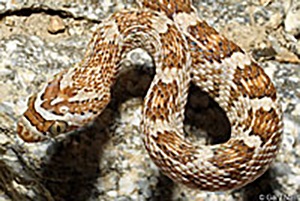Coastal Southern California is home to about twenty-five species of snakes. Within each species, there are often variants with strikingly different appearance. King Snakes, for example, can be dark or light brown as well as black. They can be banded, striped or some mixture of both. Most other snake species often vary a bit when it comes to their color and markings.
The most commonly seen snakes in this region include Rattlesnakes, Gopher Snakes, King Snakes and Garter Snakes. The only venomous snakes found in Coastal Southern California are three species of Rattlesnakes. All other snakes in this region are harmless to humans. The images below show examples of the various varieties.
Rattlesnakes
(Venomous)
Rattlesnakes are the only venomous snakes found in our region. They are very common in our local chaparral and play a vital role in helping to keep nature in balance. They have a relatively limited travel range, usually less than 1.6 miles. They are most often encountered on trails or on properties that are located near wild areas.
Rattlesnakes are easily identified by two unique physical traits. They all have rattles. No other snake species has rattles. They also have an angular, triangle-shaped head.
Rattlesnakes are not fast crawlers but when they strike at some sort of prey, they are lightning-quick. Typically, rattlesnakes can strike out about half the length of their bodies. They are not usually aggressive but when disturbed they will become defensive.
Rattlesnake coloring makes them blend in with their environment quite well. The best way to avoid an unwanted encounter with a rattlesnake is to stay on cleared trails and constantly survey the ground where you are walking.
Gopher Snakes
(Harmless to Humans)
Gopher Snakes are among the most common snakes found in our region. They are non-venomous and harmless to humans. These powerful snakes can get to be quite large, with specimens often growing to five feet or more and some snakes growing to a length of up to nine feet. Their color and markings strongly resemble Rattlesnakes but there are two key differences between the two snake species.
Rattlesnakes, of course, have rattles. Gopher snakes do not. The other main difference in appearance is the shape of their heads. While Rattlesnakes have a distinct, triangular-shaped head, Gopher Snakes have small, oval heads.
Just like Rattlesnakes, Gopher snakes feed primarily on rodents such as mice, gophers, rats and small rabbits. Gopher Snakes are constrictors which means that they use their strong muscles to squeeze their prey. They are found throughout most of Southern California as well as most of the rest of the US.
Gopher Snakes are a valuable resident on properties that have a significant rodent problem. So valuable that the Snake Wranglers keep a list of properties where the owners have requested that we release any captured Gopher Snakes to help reduce their rodent problems.
King Snakes
(Harmless to Humans)
King Snakes are another, relatively common, non-venomous snake. They do not get as large as some of the other snakes, usually maxing out at three to four feet. A variety only found on an island in Mexico can grow as long as seven feet.
Like Gopher snakes, King Snakes are constrictors. They feed on small rodents, birds, lizards, eggs and frogs. They are resistant to Rattlesnake venom and commonly eat Rattlesnakes. King Snakes are usually docile and make good pets.
King Snakes are often beautifully colored. Their coloration can range from black to light brown often with yellow bands or stripes. Sometime a mix of both. The Mountain King Snake, not found in Coastal San Diego, displays a striking pattern of red, yellow and black bands.
King Snakes are one of the Snake Wranglers favorite reptiles. Many of the King Snakes our Wranglers capture are released on private property for organic pest control.
Garter Snakes
(Harmless to Humans)
Garter Snakes are commonly found in wet environments. They are non-venomous and excellent swimmers. They are slender and seldom grow longer than about three feet.
Garter Snakes typically feed on things that can be found in or near water, such as frogs, fish, earthworms and the occasional bird or rodent. This snake can easily be identified by the awful smell it secretes.
While it is relatively easy to identify a Garter Snake, there are many subspecies with widely varying coloration. The most common variety in our region is the Two Striped Garter Snake. It is a dull green with yellow stripes. Other varieties are more brightly colors in reds, yellows and even blue markings.
Since Garter snakes are harmless, we usually do not capture or relocate them since they must be placed in a wet environment to survive and those are a bit rare in sunny San Diego.
Other San Diego Snakes
(Harmless to Humans)
The images below show some of the less common snakes found in San Diego County. For more information on these and all other types of reptiles and amphibians please check out the California Herps website by following this link.
There are about 25 species of snakes that can be found in San Diego County. Some are quite rare. All snakes native to our region, except for Rattlesnakes, are non-venomous and therefore harmless to humans.

For questions, or comments about this website, please email webmaster@snake-wranglers.com

